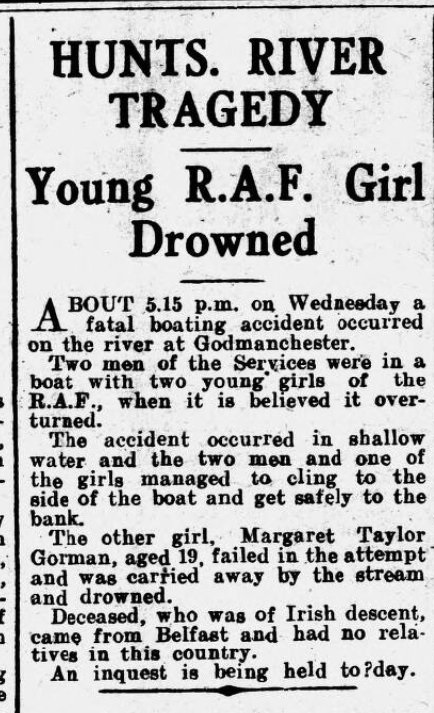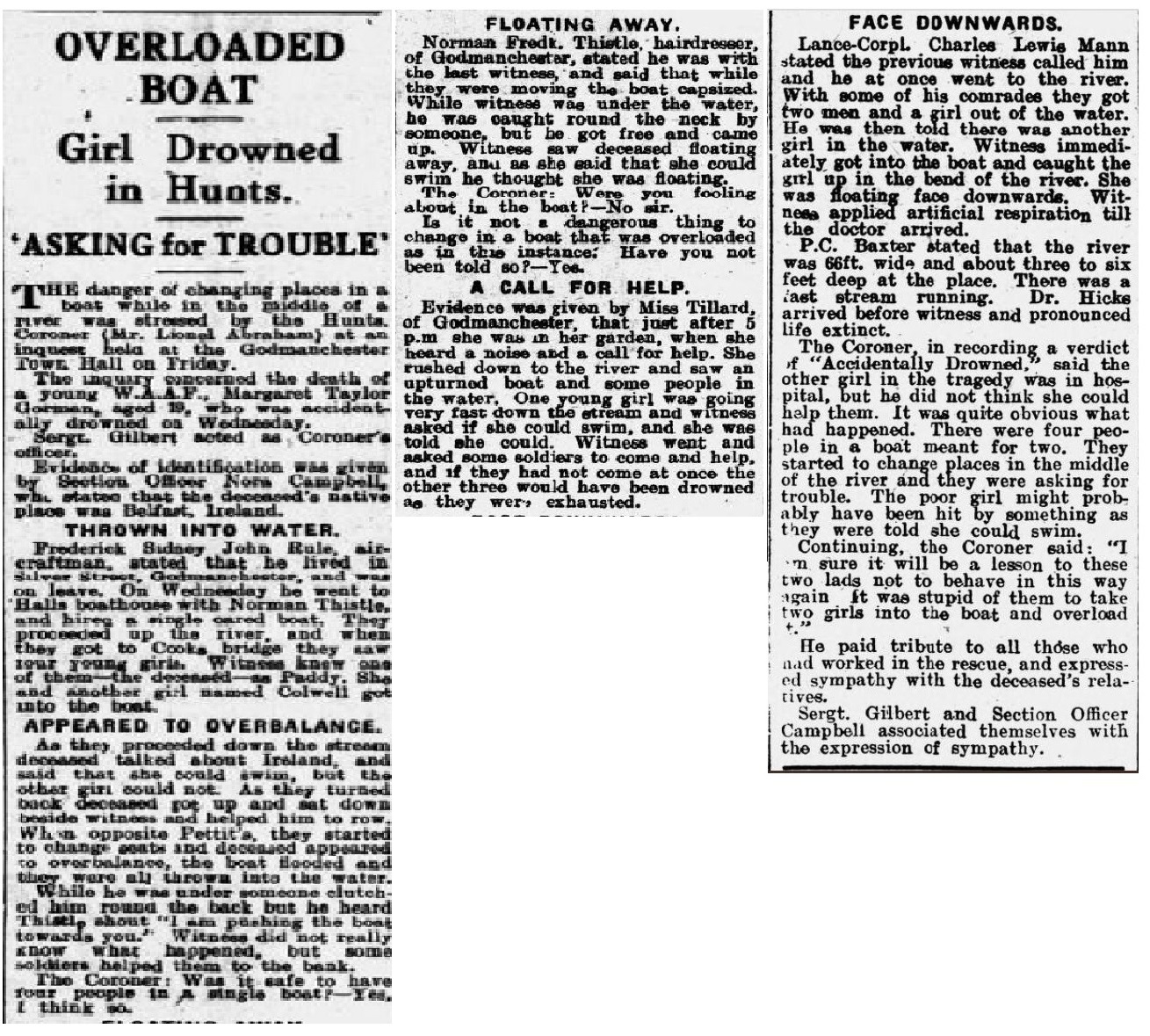| Note that one of the newspaper articles states she was 19 years of age, although an age of 16 is given on the CWGC website and in the book entitled "The Godmanchester Stirling" - excerpt follows: "Margaret Taylor Gorman Women’s Auxiliary Air Force Lost to us 25th March 1942 Margaret is one of the youngest Britons to lose their lives in the Second World War, and she was certainly the youngest WAAF to die in the conflict. She was just 16 years of age when she sadly drowned in the Great Ouse, close to Island Hall, Godmanchester. She held the rank of Aircraftwoman 2nd Class. Originally from Belfast, Northern Ireland, she was in Godmanchester on leave when the tragic accident happened. Her mother passed away around 1926 when Margaret was just a toddler, she had three sisters and three older brothers, and when her father re-married, she gained another three step sisters and a half-brother. We cannot be sure who she begged to be allowed to join the WAAF, but whoever it was she finally convinced them. It is also possible that she lied about her age when she enlisted.. The Hunts Post carried the Coroner’s report following a boating tragedy at Godmanchester where a young WAAF drowned, leaving another in hospital. “To start changing places in mid-stream, in a boat which is already overloaded, is simply asking for trouble” declared the County Coroner, Mr Lionel Abraham, at the close of an inquest at Godmanchester on Friday, after he had heard the dramatic story of how a young WAAF was drowned when a boat capsized at Godmanchester on Wednesday evening. The girl and a companion had accepted an invitation from two young men to enter the boat and the Coroner criticised the youths somewhat sharply, saying he thought what had happened would be a lesson to them. Returning a verdict that deceased was accidentally drowned, the Coroner said that the other girl was in hospital and unable to give evidence. It was only too obvious, however, what had happened. “When you had four people in a boat that was meant for two, when two people were rowing on a single pair of oars and when they started to change places in midstream, it was simply asking for trouble”. He imagined the deceased was hit by something but it was extraordinary that she floated and did not sink. Everyone concerned in the rescue seemed to have behaved very well but unfortunately it was too late. He was sure this would be a lesson to these two lads not to behave in this way again. It is believed that her sisters travelled to Godmanchester for the funeral which was covered in the Hunts Post. She is buried in St Mary’s Churchyard, Godmanchester. Her name does not appear on the Godmanchester War Memorial. One very sad fact is that Margaret is acknowledged as being the second youngest women serving as a WAAF to lose her life during the war. |

